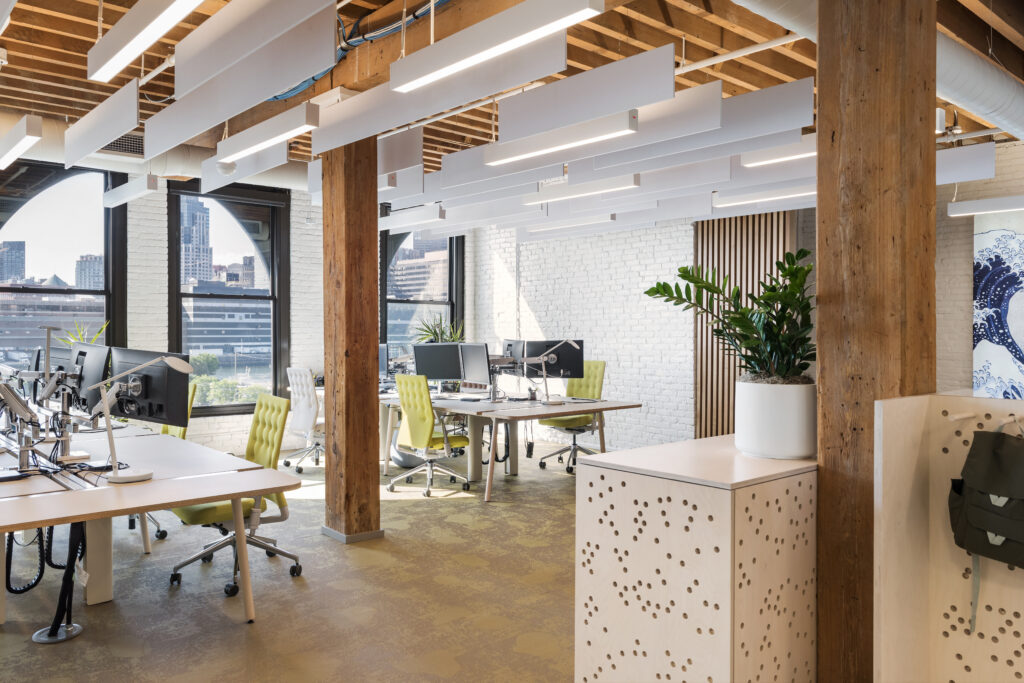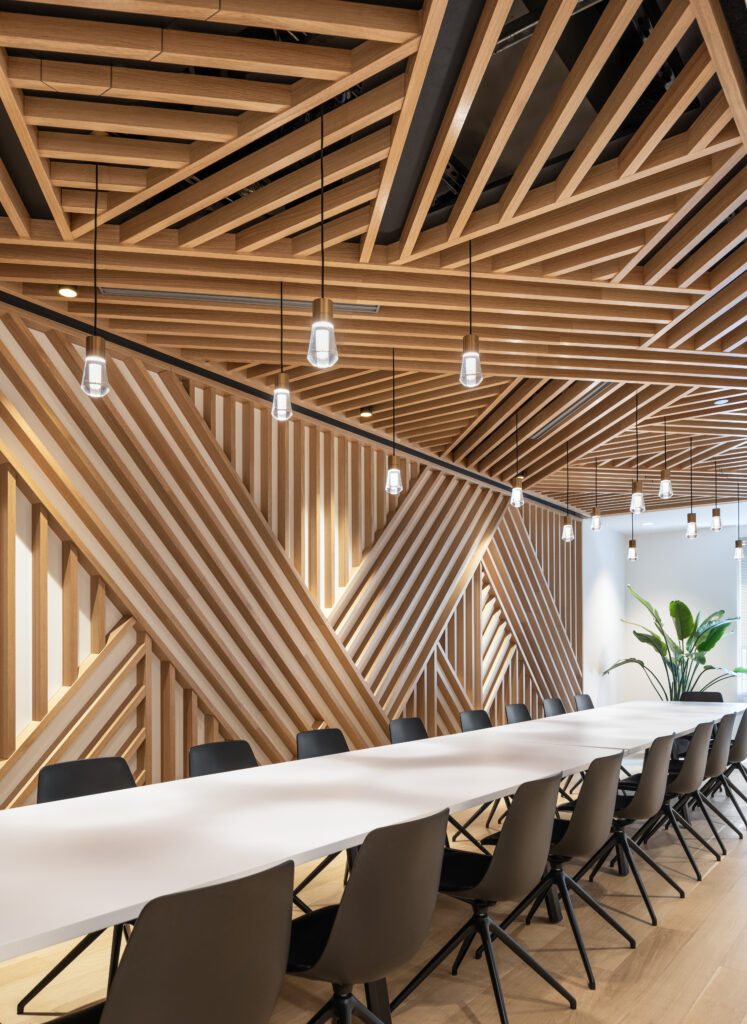A Tale of Two Projects: Sustainability Unites Diverse Aesthetics
A Tale of Two Projects: Sustainability Unites Diverse Aesthetics
In the dynamic world of interior architecture and design, two of our recent projects, Akelius Real Estate Management and BV Investment Partners illustrate how sustainability can be achieved in distinctive ways, irrespective of the client’s setting, budget or design preferences. While these projects differ significantly in terms of aesthetics and building type, a shared commitment to sustainability underpins their commonality.
Diverse Aesthetics, Unified Sustainability
Akelius and BV Investment Partners have two entirely distinctive design aesthetics. The Akelius office features a light filled palette, using the natural rough-hewn wood of the existing columns as contrast to the mostly white interior, finding opportunities for color in artwork and playful furnishings. In contrast, the BV Investment Partners office highlights a sleek grayscale palette with touches of whimsy in the light fixtures, patterned acoustical felt treatments in open workspaces, partially exposed ceilings, and a more refined wood aesthetic throughout the communal areas. The design for both projects, however, was guided by a commitment to sustainable design.
Akelius and BV Investment Partners are living reflections of their respective clients’ philosophies. Akelius pursued LEED and WELL certifications, emphasizing their commitment to sustainability. On the other hand, BV Investment Partners did not pursue a specific certification, but still shared an enthusiasm for making their environment sustainable. Despite different appearances, both projects underscore DiMella Shaffer’s commitment to environmental responsibility and resilience.
An Internal Standard
At DiMella Shaffer, our unwavering commitment to sustainability is at the core of our design philosophy. Regardless of our clients’ aesthetic preferences or budget constraints, we consistently adhere to LEED certifiable standards. This guiding principle remains unchanged, underscoring our steadfast approach to sustainable design. We believe it is our duty as architects and interior designers to deliver spaces that are maximally sustainable, aligning with the project’s budget and parameters while prioritizing our clients’ preferences.
The Akelius space, which achieved LEED Gold and is also on track to achieve the WELL Standard, is in the Fort Point Channel neighborhood of Boston. Given the brick-and-beam character of this existing building, we focused our design strategies on celebrating the “bones” of the building. For instance, leaving the exterior walls and wood columns exposed significantly reduced the need for new drywall partitions. For the finishes, we offered a “kit of parts” that utilized a palette consistent with Akelius’ design aesthetic throughout. This was created with acoustic materials, lighting, custom designed millwork patterns, double glazed demountable partitions, and an all-white interior that allows the color of the furniture and artwork to be the complement.

In contrast, BV Investment Partners operates within a more classic high-rise office building and did not require a formal certification, although the notion of sustainability resonates with the forward-thinking nature of their leadership. We maintained a strong commitment to sustainability, implementing eco-friendly strategies whenever possible, such as eliminating VOC’s from all relevant materials, choosing energy efficient lighting and equipment, and specifying finish materials with third party certifications to ensure the products’ sustainability credentials.

Akelius and BV Investment Partners serve as vivid examples of how a client’s mindset may guide a project’s aesthetic, but irrespective of their goals or design preferences, our commitment to sustainability underscores both projects. Consistency in low flow plumbing fixtures, reduction of lighting power density, and the use of sustainable materials remains a constant. Sustainability acts as a versatile template, adaptable to reflect our clients’ unique philosophies and goals. Both projects represent sustainability beyond aesthetics and stand as a tribute to the transformative potential of sustainable design in shaping our built environment.
